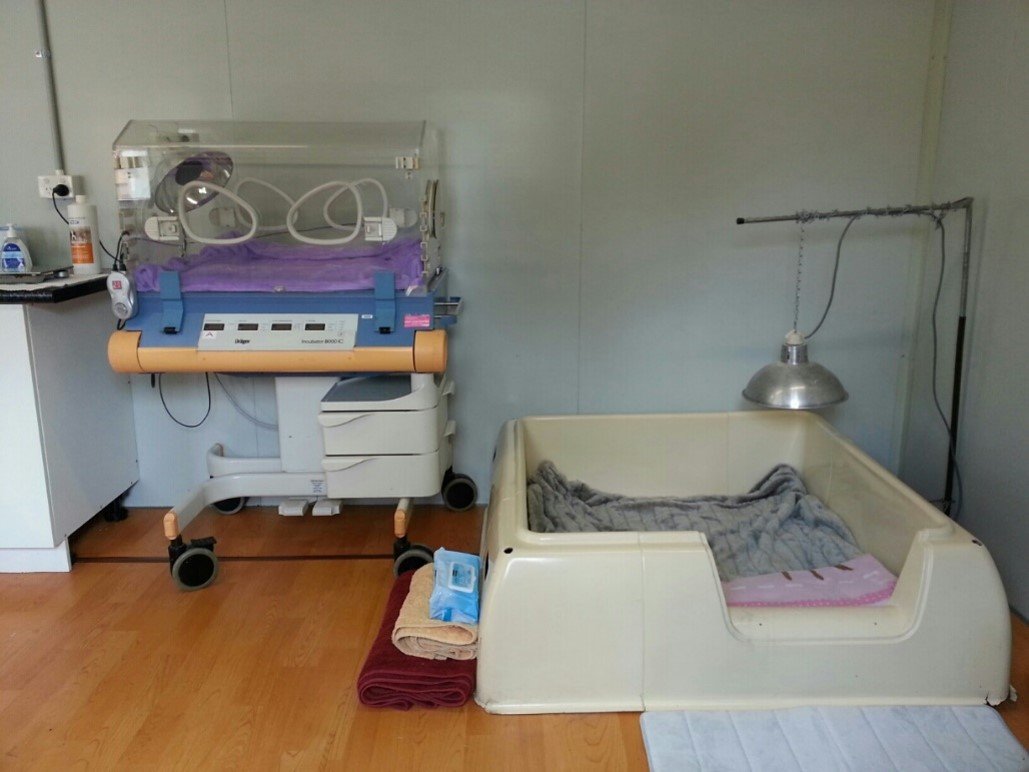
Pregnancy Management & Parturition
Pregnancy length
Pregnancy length in the bitch is 57-72 days from any one mating if breeding management is not employed, 65 days from the LH surge, 63 days from ovulation or 57 days from day 1 of cytological dioestrus (first day of going out of season). In the queen pregnancy length is 57-75 days from any one mating. Cats are quite difficult and confusing to a degree, as even though they are induced ovulators (ovulate in response to a mating), their due date is over an 18-day period, even when breeding’s are restricted to 1-2 days.
Pregnancy maintenance
Pregnancy in both the bitch and queen is maintained by progesterone. In queens there is likely some form of yet to be identified maternal recognition of pregnancy signal from the foetus, as if a queen ovulates and fails to get pregnant, her progesterone will fall after around 6 weeks and she will start cycling again. In contrast, the bitch has an obligatory dioestrus period, her progesterone stays high for 9 weeks whether she is pregnant or not.
Pregnancy detection and viability
The earliest pregnancy can be detected is 18 days post ovulation via trans abdominal ultrasound. It must be noted though, that heartbeats will not be seen until 24 days post ovulation. Whilst there is a blood test advocated for pregnancy diagnosis in the bitch (Relaxin assay), the test is unreliable until after 35 days of pregnancy, and it doesn’t assess foetal viability. Ultrasound has the benefit of being able give an indication of number of numbers of puppies or kittens when done early. It also allows us to assess the viability of the embryonic sacs and foetuses so we can institute treatments if we see problems with the pregnancy. Just like in humans, we can take measurements via ultrasound throughout pregnancy to ensure foetal development is normal.
Parturition (birthing/whelping/queening) assessment
I always recommend pregnant animals be assessed around 1 week before parturition. Foetal viability is assessed via ultrasound and appropriate foetal size is assessed via measurement of biparietal diameter (forehead width) with ultrasound. At this visit foetal numbers can be accurately assessed by taking a radiograph (this is safe for both the mother and babies) so that we know how many babies the mother is carrying. The ultrasound can also indicate if we have some foetal monstrosities such as water babies (hydrops foetalis) or mummified babies. Unfortunately, we cannot assess for all deformities in the puppies or kittens, as some are not evident until birth.
During parturition, calcium is very important, and no giving ice cream is not enough!. Calcium is very important for uterine contractions. It is recommended not to have more than 2 hours between puppies or kittens, although current literature states best survival rates of pups and kittens is if there is no more than 1 hour between each puppy or kitten. Sometimes oxytocin is used during parturition, however oxytocin, which causes an intense uterine contraction, can be quite dangerous for the mothers and babies so it needs to be used under veterinary supervision, and only towards the end of labour. Using oxytocin early in the parturition process can result in uterine tetany which can cause foetal death or uterine rupture.
Further ultrasound assessment of the foetuses may be required around parturition. Viability is assessed via the foetal heart rate, with foetal heart rates under 180 beats per minute indicating foetal distress and a caesarean surgery is likely required.
Progesterone, which maintains pregnancy in the bitch, will drop in response to foetal cortisol release. Once progesterone drops whelping will occur within 24-36 hours. It is recommended to monitor the rectal temperature of the bitch in the last week of pregnancy, this should be checked and recorded twice daily to get a feel for how it changes naturally. The drop in progesterone which will induce labour will also cause a drop in rectal temperature of the bitch by more than 1°C and then the temperature will go back up again.
In the queen, while we believe progesterone is the only hormone to maintain pregnancy, the progesterone often doesn’t drop when queening occurs, leading us to believe there may be other mechanisms involved.
If a bitch or queen develops a black, green, red or brown vaginal discharge at any time during pregnancy then veterinary attention should be sought immediately.
Parturition care and post parturition care
Bitches and queens should be allowed to have their puppies and kittens in a warm, quiet area. For queens it is important for the area to be dimly lit. A whelping or queening box should be made of something easy to clean, with plenty of soft bedding that can be easily and frequently changed and washed. The room containing the box should be comfortable but not hot (around 21-22°C) is ideal, and a heat source, such as a heat lamp, is placed up one end of the box, to allow for the puppies or kittens to be kept at the following environmental temperatures:
| Age of puppy or kitten | Temperature under heat lamp |
|---|---|
| 0-7 days | 29-32⁰C |
| 8-28 days | 27⁰C |
| 29-35 days | 21-24⁰C |
| 35+ days | 21⁰C |
It is important to understand we don’t want the whole room at this temperature, or the mother will not lie near the babies and so they will not feed well increasing the chances of the babies getting sick and the mother getting mastitis.




